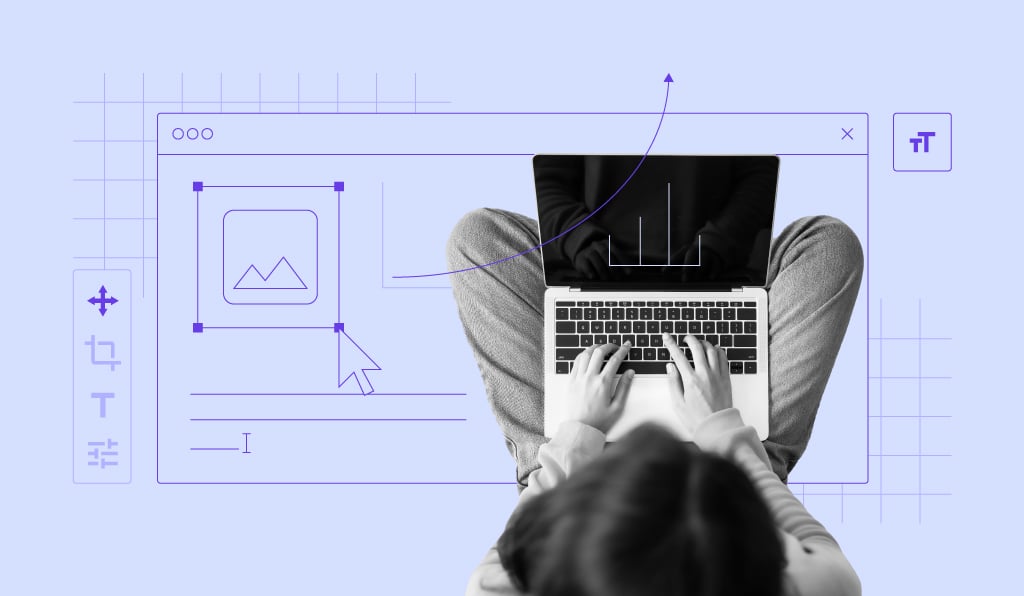Maximize Your Online Potential with Strategic Web Design Gauteng Approaches
Wiki Article
Checking Out Different Sorts Of Web Design to Enhance Customer Experience
In the ever-evolving electronic landscape, the expedition of varied internet style techniques is extremely important for enhancing individual experience. From responsive structures that adapt effortlessly across tools to minimal layouts that prioritize simpleness and quality, the choices made in website design can greatly affect functionality and interaction. Incorporating interactive components further enriches the user journey, making sites a lot more interesting and vibrant. Just how do these techniques collectively contribute to a user-centric electronic atmosphere that not only captivates but likewise retains individuals? The response might depend on the nuanced balance in between aesthetic charm and practical availability.Responsive Web Design
In an age where electronic intake goes beyond multiple gadgets, receptive web design has actually come to be a cornerstone of effective individual experience. This flexibility not just improves visual appeal however additionally improves access and navigating, vital for keeping customer involvement.The implementation of RWD starts with a mobile-first strategy, prioritizing the tiniest screen size to assure performance and visual comprehensibility. By utilizing CSS media inquiries, designers can tailor the web site's look based on the characteristics of each tool. This makes certain that images scale correctly, text remains readable, and interactive aspects are easily accessible, thereby lowering the requirement for too much scrolling or resizing.
In addition, responsive design adds to improved seo (SEARCH ENGINE OPTIMIZATION) by providing a consistent individual experience and decreasing bounce rates. Online search engine favor mobile-friendly websites, making responsiveness an indispensable element of digital approach. Fundamentally, receptive internet layout is crucial for accommodating varied individual communications, fostering a inclusive and appealing online presence.
Minimalist Style Approaches
Minimal style's attraction depends on its capacity to boil down intricate information right into its most crucial aspects, developing a uncluttered and instinctive individual experience. By focusing on simpleness, minimalist style removes extraneous details, permitting customers to concentrate on core content and capability. This method is identified by adequate white area, tidy lines, and a minimal color scheme, all of which add to an aesthetically pleasing and efficient interface.
Furthermore, minimalist design supports quicker loading times, as fewer graphical aspects and reduced content complexity can decrease the quantity of data required to provide a webpage. This performance not just boosts individual contentment yet likewise adds to much better search engine optimization (SEO) rankings. Minimal layout is not merely a stylistic choice yet a critical method that can substantially influence individual involvement and conversion rates.
Interactive and Dynamic Elements
Vibrant and interactive elements are critical in improving individual engagement and creating unforgettable internet experiences. These elements include computer animations, float effects, sliders, and real-time updates, which not just record users' interest but likewise promote smooth navigation. By integrating these features, developers can transform fixed pages into interesting electronic settings that motivate interaction and exploration.Animations, for example, can direct customers via complicated details without frustrating them, while hover impacts supply immediate feedback, enhancing the individual's understanding of helpful hints clickable areas. Web Design Gauteng. Additionally, sliders enable individuals to check out web content at their very own pace, and real-time updates ensure that information provided is appropriate and current, keeping the individual's interest

User-Centric Layout Approaches
A foundation of reliable website design is the execution of user-centric layout strategies, which focus on the requirements and choices of the end individual most importantly else. By concentrating on the user, designers can develop instinctive, available, and appealing experiences that improve satisfaction and drive interaction. User-centric layout entails comprehensive research study to recognize the target audience's behaviors, goals, and obstacles. This research is essential for developing personas and circumstances that assist layout decisions, ensuring the final anchor product reverberates with individuals.One essential approach is usability screening, which includes observing genuine users as they interact with the design. This procedure identifies discomfort points and areas for enhancement, allowing designers to fine-tune the user interface iteratively. Integrating feedback loopholes and active methodologies better makes sure the layout progresses abreast with customer assumptions.
Additionally, access is a critical component of user-centric design. Making certain that electronic platforms come to all customers, including those with handicaps, improves inclusivity and widens the possible user base. This can be attained with compliance with Web Material Access Standards (WCAG) and the thoughtful application of layout concepts like readability, navigating, and comparison.
Eventually, effective user-centric style promotes a seamless link between the user and the digital setting, raising total user experience.
Applying Most Recent Style Patterns
In the realm of website design, remaining abreast of the most up to date style fads is necessary for creating visually compelling and practical user interfaces that captivate customers. As electronic experiences advance, designers are significantly welcoming trends try here that emphasize personalization, minimalism, and interactivity. Minimal layout, defined by clean lines and adequate white space, allows customers to concentrate on web content without unneeded diversions. This approach not only boosts aesthetic appeals however likewise boosts usability by enhancing navigation and minimizing cognitive lots.
Furthermore, integrating the most up to date typography patterns, such as variable typefaces, uses adaptability and adaptability throughout different devices and screen sizes, making sure uniformity in user experience. Lastly, dark setting styles have actually gotten appeal as a result of their visual appeal and power effectiveness on OLED displays. By purposefully carrying out these trends, internet developers can develop easy to use and ingenious web sites that resonate with contemporary audiences.
Final Thought
An extensive exploration of numerous internet design techniques is essential for improving individual experience. Eventually, a balanced and enlightened strategy to web design significantly boosts user complete satisfaction and interaction, leading to improved total internet site performance and success.In the ever-evolving electronic landscape, the expedition of diverse internet layout methods is critical for enhancing individual experience.A foundation of efficient web layout is the execution of user-centric layout approaches, which prioritize the demands and preferences of the end customer above all else. Guaranteeing that electronic systems are obtainable to all customers, including those with disabilities, improves inclusivity and broadens the possible individual base.In the realm of web layout, remaining abreast of the most recent design fads is important for creating visually engaging and practical user interfaces that astound individuals (Web Design Gauteng).A comprehensive expedition of various internet design approaches is essential for improving customer experience
Report this wiki page